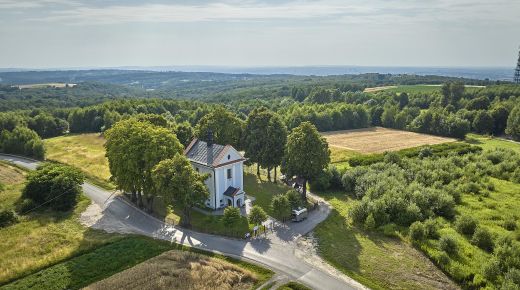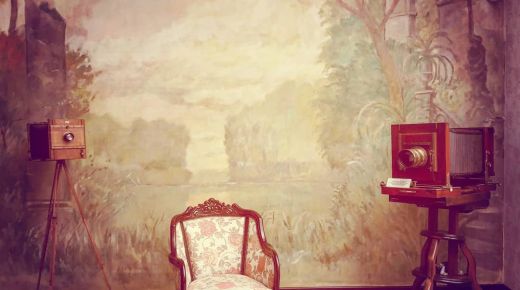The history of it reaches back to 17th c. Princess Zofia Pudencjana Zasławska-Ostrogska the daughter of Mikołaj Spytek Ligęza according to the last will of her father written down in the legal testament, inherited Rzeszów in 1637
Former Piarists convent in Rzeszów
Parish of St. Cross in Rzeszów
3rd Maja 20
35-030 Rzeszów
phone: 17 85-35-197, 601 869 071
e-mail: wjagustyn@caritas.rzeszow.pl
The construction of the complex had started thanks to her founding. She planned to grant the building to Bernardine Sisters. An acknowledged architect Jan Canger was brought to Rzeszów upon her request. Due to early death of Zofia, Rzeszów became the property of her brother-in-law Jerzy Sebastian Lubomirski. The new owner in 1658 brought to Rzeszów the progressive and patriotic Piarists and granted the new buildings to them, knowing how shaping youth’s attitudes is important and appreciating Piarists achievements in this field. After the Battle of Vienna (1683) Rzeszów was visited by the victorious king Jan III Sobieski who in the Piarists church thank them for their contribution during the military campaign. Hieronim Augustyn Lubomirski who was the owner of Rzeszów at that time and fought in Vienna and Parkany founded the rebuilding of the sanctuary according to the designs by Tylman of Gameren in the act of gratitude for the victories.
When entering the church, eye-catching are: the main altar, side altars, organs – all Rococo style, Regence style pulpit, painting of Mary with baby Jesus on copper plate. In the church there are Zofia’s crypt, urns with hearts of Hieronim Augustyn Lubomirski and his wife Konstancja buried in Wiśnicz, intriguing marble grave statue of Jerzy Ignacy Lubomirski, on his sarcophagus lies angel of death holding a medallion showing the image of prince. The interior of cloister was left totally empty after its dissolution. In 1935 it was adapted for the District Museum purposes. The school building which didn’t change its function throughout the centuries, can boast its barrel-lunette vaults.
In 18th c. the complex was the longest architectural composition. The façade is ornamented with sculptures and represents a typical for classicist Baroque monument of glory of the noble family. Ligęza sisters look down upon the passers-by on the main walking street of the city – 3 maja street. The one with the crest of the Ostrogski family is Zofia, the other one with the crest of the Ligęza family is younger Konstancja. Jerzy Sebastian Lubomirski is placed in the highest point of the façade. Two statues in the niches symbolize the virtues: strength and bravery, self-control and composure. The plate in portal with Latin text enumerates the achievements of the Lubomirski family.
The 2003 plate by the entry commemorates ‘murdered in 1939-1947 by Ukrainian nationalistic and chauvinistic bunches of OUN-UPA Polish from Wołyń, East Małopolska and Rzeszów area’ and includes a quotation from ‘Dziady’ (‘Forefathers' Eve‘): ‘If I ever forget them, then God, forget me!‘
Among transformed after three centuries by the emperor Joseph II into a secular school Collegium Resoviense’s students were: Ignacy Łukasiewicz and general Władysław Sikorski. Among the teachers: Stanisław Konarski the educational reformer and Józef Herman Osiński physicist called the first Polish electrician.
Worth seeing in Rzeszów:
summer palace of the Lubomirski family
Muzeum of the History of Rzeszów
Museum of Bedtime Cartoons, collection by Wojciech Jama
Museum of the Technology and the Military
Wanda Siemaszkowa Theatre, old building of Gimnastic Association „Sokół”
-
Jan from Dukla monument
-
Mother of God Poland's Queen monument
-
Stanisław Konarski monument
-
PKO building (1906-1908)
-
Art-Nouveau villa from 1903 at Pod Kasztanami avenue
-
Art-Nouveau villa from 1899 at Pod Kasztanami avenue
-
“Pod sową” villa from 1900 at Pod Kasztanami avenue
-
Jędrzejowicz family palace, hospital now
-
Jędrzejowicz family palace on Załęże built18/19th c.
-
city hall
-
brick houses from 19th c.
-
Esterka's house, Rynek 15
-
well at the city main square
-
Diocesan Museum
-
Hunters Museum
- Artur Malawski Philharmonic Hall
-
Józef Szajna Gallery
-
building of Regional Public Library from 1890, formerly home to the district council
-
Bishops palace at Jałowego Street
-
Colonel Leopold Lis-Kula Secondary School
-
Cichociemnych Square with Józef Szajna’s sculpture entitled Passage in 2001,
-
Kazimierz Górski Square
-
Rzeszów Photo Gallery
-
BWA Contemporary Art Gallery
-
Holy Trinity Chapel
-
Old Cemetery
-
January Uprising statue built in 1886
-
Tadeusz Kościuszko monument
-
Juliusz Słowacki monument
-
Colonel Leopold Lis-Kula monument
-
General Władysław Sikorski monument
-
Jan Pakosławic monument
-
Tadeusz Nalepa monument
-
Damned Soldiers monument
-
Stanisław Nitka monument by the Wisłok River
-
Terror Victims monument
-
Jan Kochanowski breast
-
Prince Kazimierz Pułaski breast
-
Jerzy Popiełuszko monument
-
St. Jan Nepomucen monument
-
Marcin Lelewel Borelowski memorial plaque
-
Ignacy Łukasiewicz memorial plaque
-
a sculpture of a boy shooting from a sling
-
building of Voivodeship Office
-
circular pedestrian bridge
-
The Revolutionery Act monument
-
wall painting representing a scene from Deballage, Józef Szajna’s theatre performance, Sokoła 3
-
Rzeszów's view by Lubomirski family architect Karol Henryk Wiedemann made in 1762 r.
-
Castle bridge
-
Gabriel Narutowicz bridge
-
former WSK Culture Centre, Institute of Music now
-
manor house built in 19th c., Dąbrowskiego 19
-
rope park Expedycja
-
skatepark
-
„Lisia Góra” nature reserve
-
Władysław Szafer nature-didactical route
-
Leopopld Lis-Kula red trail
Photo: Krystian Kłysewicz



